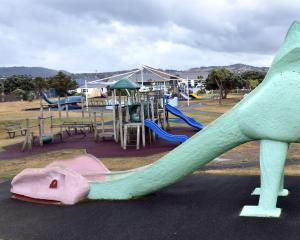New Zealand's best known lichen researcher has been elected a foreign member of the Royal Society of Arts and Sciences in Gothenburg, Sweden.
The surprise honour was "quite a distinction", and recognised that New Zealand lichenology was in "good heart".
New Zealand was a lichen "hot spot" with 10% of the world's species, while Dunedin was the most lichen-rich city in the world, Dr Galloway (69) said.
There were only about 85 foreign members of the Swedish society, to which fewer than 10% of Sweden's professors were admitted.
His friend and long-time collaborator Prof Lars Arvidsson is on the society's council.
Together the pair are researching a genus of Ecuadorian lichen (Sticta).
Dr Galloway's election meant they should be able to publish their research under theauspices of the society, which would increase the work's prominence.
Dr Galloway, who has identified thousands of New Zealand lichen species in his definitive Flora of New Zealand Lichens, said he had been a pioneer because so little had been done previously.
He was at heart an ecologist, rather than a species identifier and compiler, but he was pleased he had set the scene for the "young guns" in the field to expand on his work.
Lichenology had given him a fantastic life, including spending 22 years at London's National History Museum, seven of which he headed the lichen/bryophyte section.
His wife, retired opera singer Patricia Payne, played an important role in his career, as her singing career took her to the great centres of Europe, where he had been able to research lichen while supporting her.
Ignored and relegated by science for too long, lichen were finally coming in to their own as important barometers of pollution and biological markers of many things.
They also had anti-cancer and other health properties.
He is working on a book on lichen for the uninitiated, to be published by the end of next year.
Dr Galloway is a research associate at Landcare Research.












